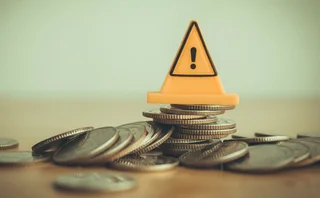ASIC Tightens Automated Trading Controls

The Australian Securities and Investments Commission (ASIC) has published its latest report on market structure, in which it has proposed enhanced oversight for automated trading strategies.
Market participants utilizing automated functions in trading will now be required to maintain pre-trade filters, as well as the ability to suspend or limit as required. They will also be mandated to hold increased control over their order entry systems, and to submit their systems for review at least annually.
ASIC expects the new rules to cost current participants for compliance, although it does mention that many firms already have similar processes in place. The rules have come on the back of a disaster at US broker Knight Capital several weeks ago, in which an abberant algorithm lost the company $440 million in a day, requiring it to be bailed out by a consortium of other brokers and market-makers.
"Recent events overseas are a reminder of the speed and automation of markets and the importance of robust controls over those systems," says Belinda Gibson, deputy chair at ASIC. "The enhancements to participant-level controls that ASIC has released for consultation, together with the market-level controls released in June will build confidence in the integrity and cleanliness of our capital markets and facilitate international capital flows. The increasing automation of trading, and ASIC's focus on it, is also evident in our market supervision report, which identified issues from high frequency trading. This type of trading, and algorithms generally, continue to be of concern. The measures we are proposing will strengthen our protection against the type of disruption we have seen recently in other markets."
The new proposals have been foreshadowed since June 2012, when the regulator published Consultation Paper 179. The new paper, 184, titled Australian market structure: Draft market integrity rules and guidance on automated trading, further extends previous mentions and opens the text to comment from market participants until September 2012.
The increasing automation of trading, and ASIC's focus on it, is also evident in our market supervision report, which identified issues from high frequency trading. This type of trading, and algorithms generally, continue to be of concern.
ASIC's review process has been held in tandem with the liberalization of its securities markets. Traditionally dominated by the Australian Securities Exchange (ASX), Chi-X Australia was allowed to launch as a competitor last year, prompting a rise in the use of electronic strategies such as those involving the use of algorithms and high-frequency trading.
Only users who have a paid subscription or are part of a corporate subscription are able to print or copy content.
To access these options, along with all other subscription benefits, please contact info@waterstechnology.com or view our subscription options here: https://subscriptions.waterstechnology.com/subscribe
You are currently unable to print this content. Please contact info@waterstechnology.com to find out more.
You are currently unable to copy this content. Please contact info@waterstechnology.com to find out more.
Copyright Infopro Digital Limited. All rights reserved.
As outlined in our terms and conditions, https://www.infopro-digital.com/terms-and-conditions/subscriptions/ (point 2.4), printing is limited to a single copy.
If you would like to purchase additional rights please email info@waterstechnology.com
Copyright Infopro Digital Limited. All rights reserved.
You may share this content using our article tools. As outlined in our terms and conditions, https://www.infopro-digital.com/terms-and-conditions/subscriptions/ (clause 2.4), an Authorised User may only make one copy of the materials for their own personal use. You must also comply with the restrictions in clause 2.5.
If you would like to purchase additional rights please email info@waterstechnology.com
More on Regulation
Nasdaq’s blockchain proposal to SEC gets mixed reviews from peers
Public comment letters and interviews reveal that despite fervor for tokenization, industry stakeholders disagree on its value proposition.
FCA files to lift UK bond tape suspension, says legal claims ‘without merit’
After losing the bid for the UK’s bond CT, Ediphy sued the UK regulator, halting the tape’s implementation. Now, the FCA is asking the UK’s High Court to end the suspension and allow it to fight Ediphy’s claims in parallel.
Treasury market urged to beef up operational resilience plans
NY Fed panel warns about impact of AI and reliance on critical third parties.
Technology alone is not enough for Europe’s T+1 push
Testing will be a key component of a successful implementation. However, the respective taskforces have yet to release more details on the testing schedules.
Waters Wavelength Ep. 338: BBH’s Mike McGovern
This week, Mike McGovern of Brown Brothers Harriman talks with Tony about the importance of open architectures and the need for better data management in this increasingly AI-driven world.
Plaintiffs propose to represent all non-database Cusip licensees in last 7 years
If granted, the recent motion for class certification in the ongoing case against Cusip Global Services would allow end-user firms and third-party data vendors alike to join the lawsuit.
S&P shutters NMRF solution amid audit questions
Vendors face adverse economics due to a low number of IMA banks and prospects of regulatory easing.
Row breaks out over cause of FX settlement fails
One European bank blames T+1 for a 50% jump in FX fails, but industry groups dispute the claims.







